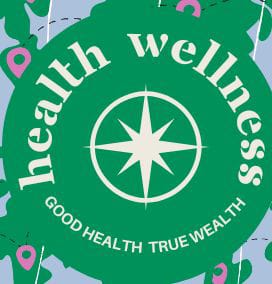What is keto diet plans ? The ketogenic diet which people call keto diet achieves widespread acceptance because it helps users lose weight while enhancing their total health condition. People following this diet must eat foods that provide low carbohydrates and moderate proteins and high fats until the body reaches a ketosis metabolic state. People should know about the concept of the keto diet and its operating mechanism. This article will investigate keto’s principles along with its health advantages and food selection methods and related medical concerns.
Understanding the Keto Diet Plan What is keto diet plans ? The keto diet plan functions as an eating approach which replaces minimal carbohydrate consumption through increased fat content.The ketosis state occurs when the body enters because of lowered carbohydrate levels which makes it burn fat stores instead of glucose.The body initiates ketone production from stored fat when carbohydrate consumption decreases thus creating another energy source.The metabolic change leads to weight loss achievements and multiple advantages for your health.
Types of Keto Diet Plans 1 People following keto diet plans have various customized options according to their specific needs and objectives and targets. 2 Standard Ketogenic Diet (SKD) – Consists of 70% fat, 20% protein, and 10% carbohydrates. 3 Cyclical Ketogenic Diet (CKD) includes alternating days between 5 days of keto and 2 days of high carbohydrates. 4 Targeted Ketogenic Diet (TKD) – Allows carb consumption around workout sessions for improved performance. This version of the keto diet combines features of the standard diet through equal portions of fat and protein yet it increases the amount of protein to about 35% of total intake.
Benefits of the Keto Diet The keto diet plan provides many known health advantages as one of its main attributes. 1. Weight Loss Since fat functions as the main energy source instead of glucose the keto eating plan efficiently helps people lose weight.People using a ketogenic diet method typically achieve superior weight loss results in contrast to those maintaining a low-fat eating plan. 2. Improved Mental Clarity and Focus Through brain cell usage of ketones people achieve better mental clarity and enhanced cognitive abilities without experiencing mental fog symptoms. 3. Regulation of Blood Sugar Levels Those following the keto diet meal plan achieve stable blood sugar levels especially when they have diabetes or insulin resistance. 4. Increased Energy and Endurance The body develops better energy management and improved endurance when people learn to use fat instead of carbohydrates for power generation. 5. Reduced Inflammation When the body enters a ketotic state it minimizes inflammation and provides beneficial effects to those who have arthritis.
Foods to Eat on a Keto Diet Plan A keto diet success depends on choosing foods which contain nutrients with high fatty content and minimal carbohydrates. The following menu represents foods which should form a part of the keto diet plan: 1 Healthy Fats: Avocados, olive oil, coconut oil, butter, and ghee. 2 People following a Keto diet should include eggs and fatty fish such as salmon and tuna together with chicken and beef and lamb as protein sources. 3 Low-Carb Vegetables: Spinach, kale, broccoli, cauliflower, and zucchini. 4 Dairy Products: Cheese, Greek yogurt, and heavy cream. 5 Nuts and Seeds: Almonds, walnuts, chia seeds, and flaxseeds. 6 Beverages: Water, herbal tea, and black coffee.
Foods to Avoid on a Keto Diet Plan A person must stay away from high-carb foods to maintain ketosis because ketosis depends on avoiding foods that contain too many carbs. 1 Sugary Foods: Candy, soda, and pastries. 2 Grains and Starches: Rice, pasta, bread, and cereals. 3 Fruits (High-Sugar): Bananas, apples, grapes, and oranges. 4 Legumes: Lentils, beans, and chickpeas. Snacks and cookies as well as processed chips represent a category of foods that should be avoided when following a keto diet.
The following keto diet plan beginner’s guide includes this meal strategy: Day 1: . Breakfast: Scrambled eggs with avocado and cheese. . Lunch: Grilled chicken with a side of spinach salad. . The combination for dinner includes baked salmon paired with roasted cauliflower. Day 2: . Breakfast Chia seed pudding with coconut milk. . Lunch: Tuna salad with olive oil dressing. . Dinner: Steak with buttered asparagus. Day 3: . Breakfast: Bulletproof coffee with cheese omelet. . Lunch: Zucchini noodles with creamy Alfredo sauce. . Dinner: Grilled shrimp with avocado salsa.
Potential Risks of the Keto Diet Several wellness advantages exist for the keto diet although it might bring specific potential safety concerns. 1. Keto Flu When people first start the keto diet they commonly develop headaches along with fatigues and nausea and dizziness caused by electrolyte imbalance. 2. Nutrient Deficiencies The limited food choices of the keto diet protocol can cause essential vitamins along with minerals to deplete within the body. 3. Digestive Issues The abstain of whole grains and fruits in the diet can lead some people to develop constipation. 4. Heart Health Concerns Some people might suffer from altered cholesterol levels when they eat many saturated fats.
Tips for a Successful Keto Diet . Maximize hydration through regular water consumption to prevent both dehydration together with electrolyte imbalance. . Document Your Protein Weight With Your Carb Count As Well As Your Fat Intake Levels. . Irrigate Your Diet with Low-Carb Veggies Because They Help Digestiveness. . Using physical exercise together with the keto diet will increase your chances of success. . The human body needs time to build tolerance for ketosis before it begins.
Conclusion As a weight-loss technique along with health improvement tool the keto diet plan functions effectively. The body reaches ketosis when people follow a diet structure with high fats and low carbohydrates which produces various health benefits. It is essential to stick to plan instructions accurately yet consulting medical experts before starting any modification of food consumption.





